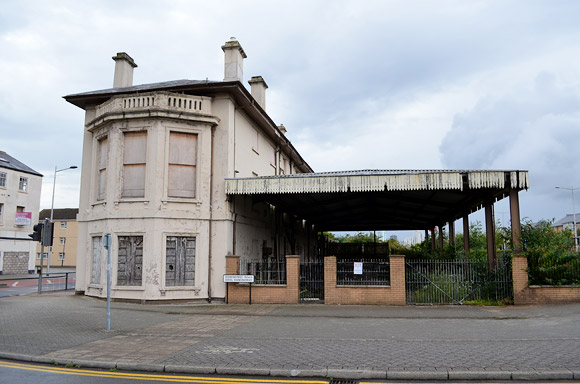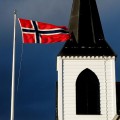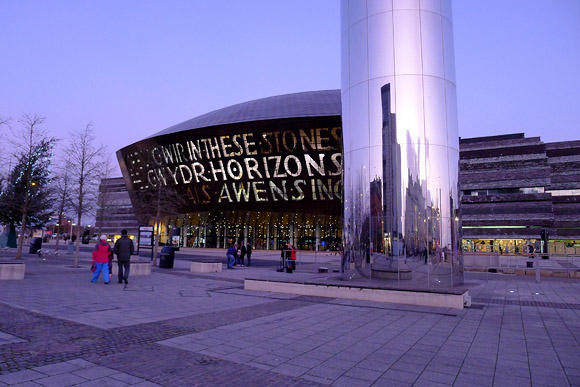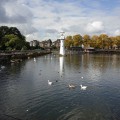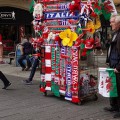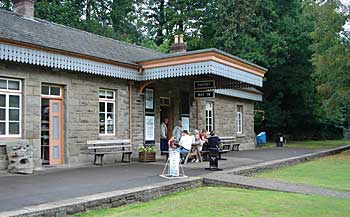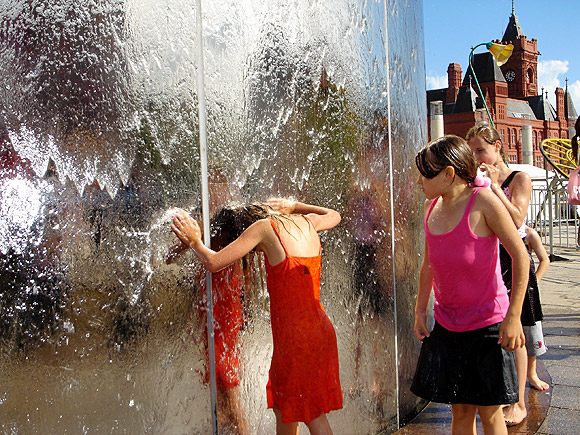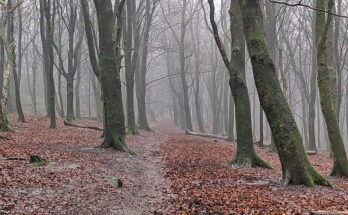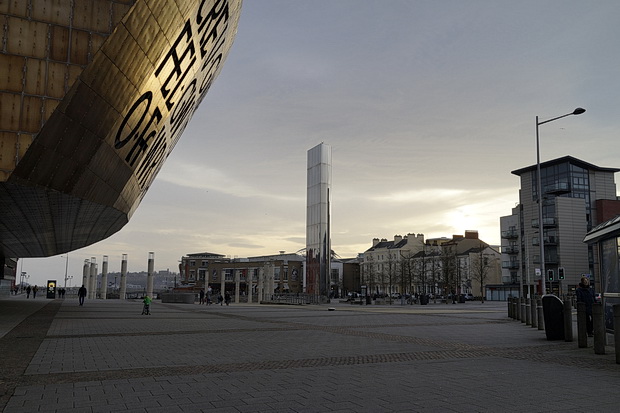
Here’s a selection of photos taken around Cardiff Bay over the festive season.
Despite raining for almost the entire duration of my Christmas visit (welcome home!), the sky thankfully cleared up for my walk down to the old Cardiff Docks.
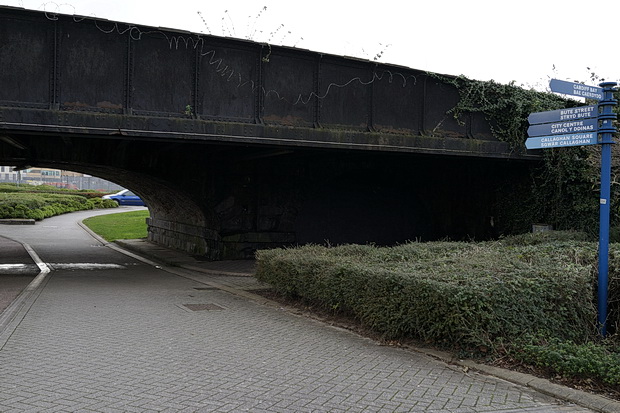
The short railway line to Cardiff Bay station is flanked by Bute Street to the west and Lloyd George Avenue to the east.
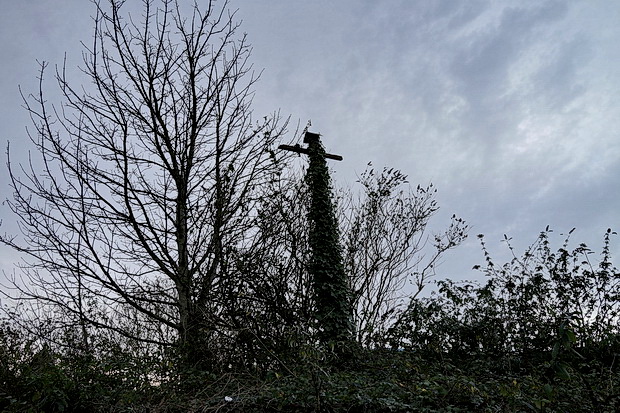
Old telegraph pole by the railway is now covered in ivy.
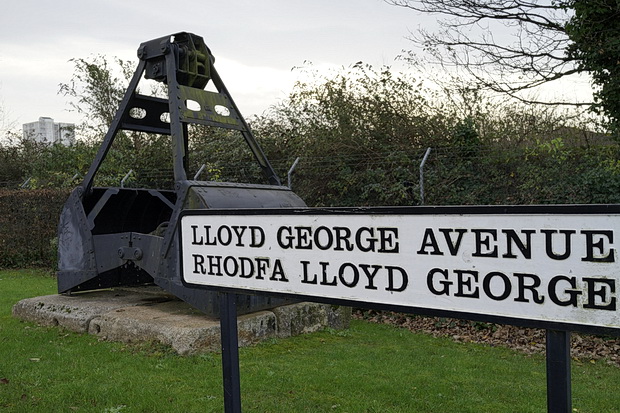
By 1880, Cardiff possessed one of the world’s greatest ports, with Barry and Cardiff docks transporting more coal than any other port in the world.
At the turn of the century, Cardiff’s docks were handling more traffic than New York.
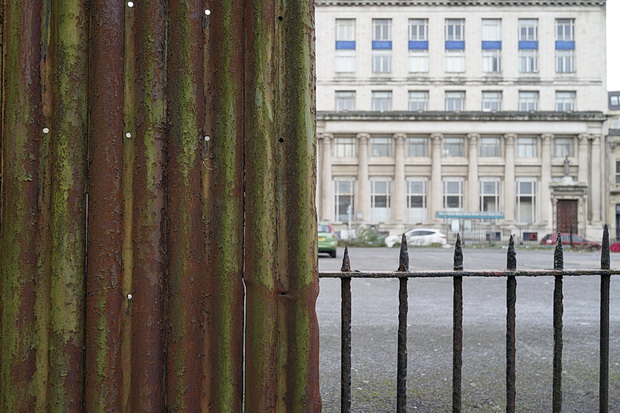
The port’s decline started in the 1920s, with the coal exports ending in 1964 and the closure of the East Moors Steelworks in 1978 almost finishing off the once-thriving port.
Just two docks, the Roath and the Queen Alexandra, are still in use today.
Read more of the rise and fall of Cardiff Docks here.
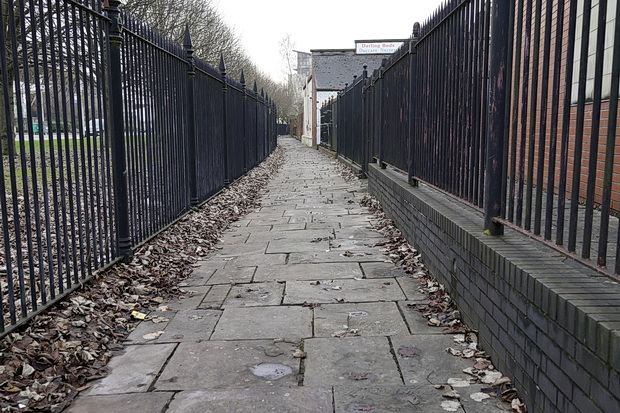
Scenes around Butetown.
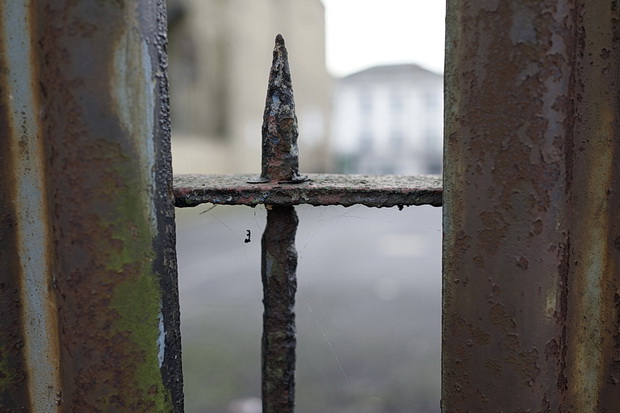
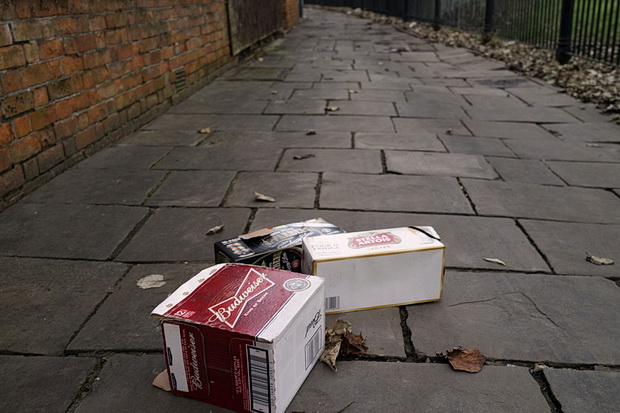
Remains of a Christmas drink.
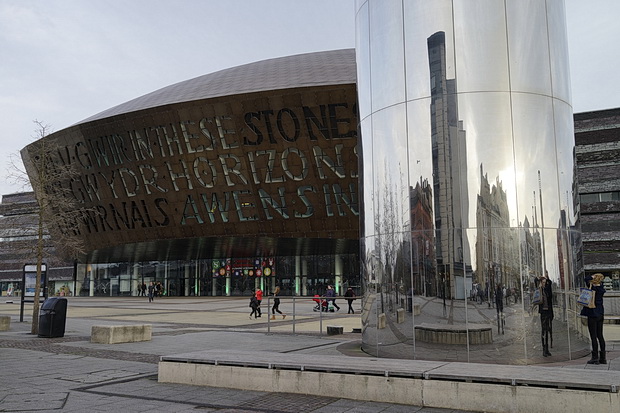
The Wales Millennium Centre hosts one large theatre and two smaller halls with shops, bars and restaurants.
The Centre houses the national orchestra and opera, dance, theatre and literature companies, a total of eight arts organisations in residence and is home to the Cardiff Bay Visitor Centre.
Constructed in two phases, spanning November 2004 and January 2009, the main theatre, the Donald Gordon Theatre, has 1,897 seats, the BBC Hoddinott Hall 350 and the Weston Studio Theatre 250.
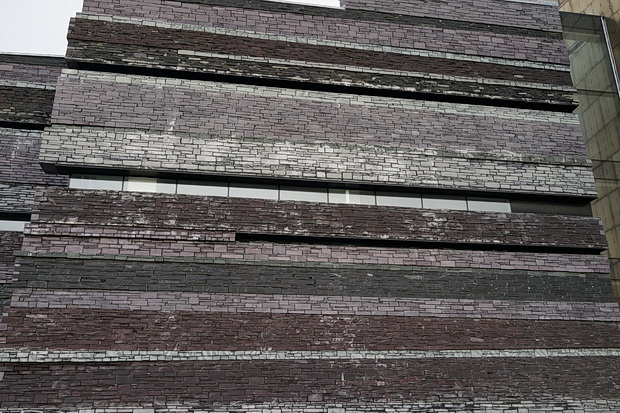
The exterior of the building is clad in multi-coloured slate collected from Welsh slate quarries, depicting the different stone layers in sea cliffs.
The purple slate came from the Penrhyn Quarry, the blue from Cwt y Bugail Quarry, the green from the Nantlle Valley, the grey from Llechwedd quarry, and the black from the Corris Quarry.
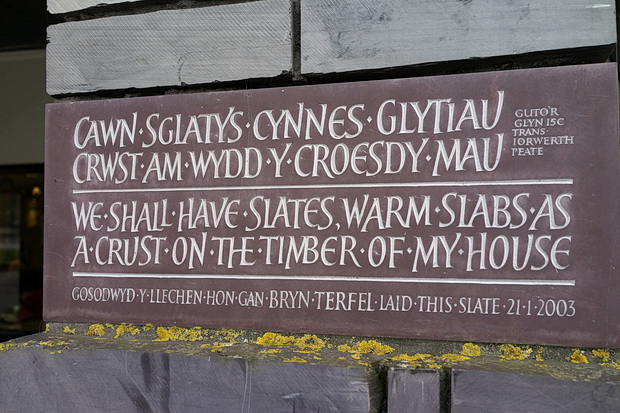
Architect Jonathan Adams explained his choice of slate for the building:
I always loved going to Ogmore and Southerndown. I thought the cliffs there looked like a building anyway. A building capable of withstanding the roughest weather for hundreds of years. The older they get, the better they look. I wondered if it would be possible to make a building which had the same qualities as these magnificent cliffs. To do that I needed a lot of stone.
Normal stone for buildings has to be specially cut into blocks; it takes a long time to make and costs a fortune. But in north Wales the historic slate industry has left behind whole mountains of waste stone that no-one wants.
This was stone cut from the mountainside for nearly two hundred years but which wasn’t good enough to make roof slates. Over 90% was thrown away. But it was ideal for making walls like the one I had in mind… [—]
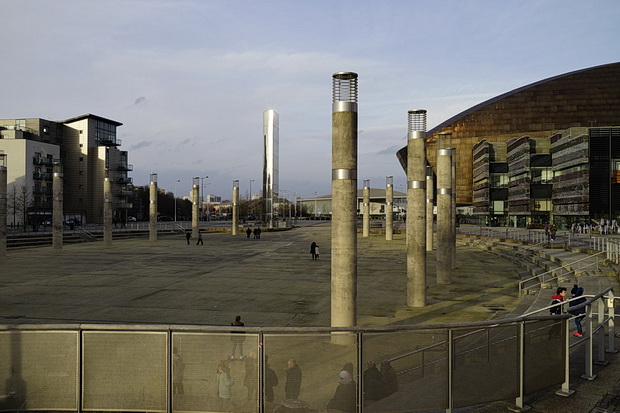
Roald Dahl Plass (formerly the Oval Basin of the docks’ system).
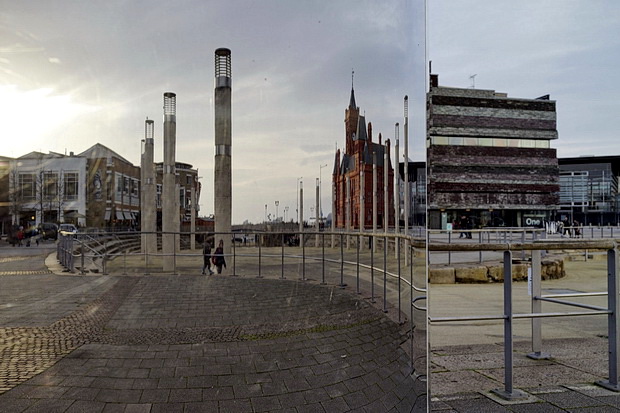
Reflections in the 70 feet (21m) high water tower.
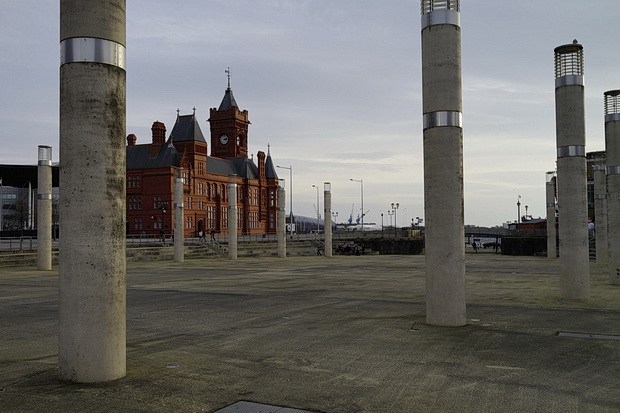
Built in 1897 as the headquarters for the Bute Dock Company, The listed Pierhead Building (Adeilad y Pierhead) is one of the city of Cardiff’s most familiar landmarks.
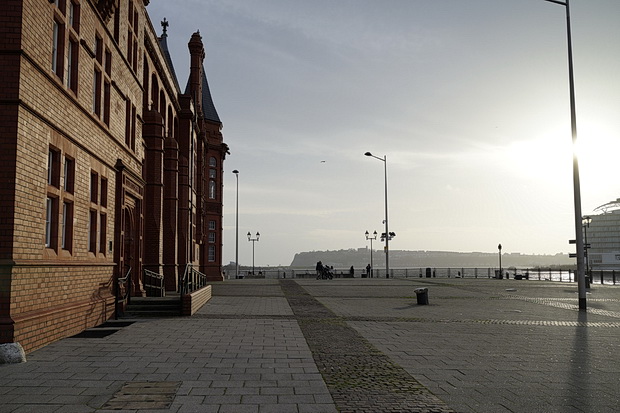
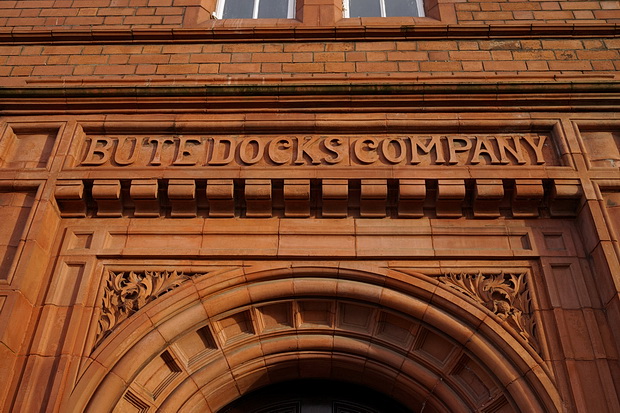
The building is sensational to look at, with its French-Gothic Renaissance theme incorporating details such as hexagonal chimneys, carved friezes, gargoyles, and a highly ornamental and distinctive clock tower.
Its exterior is finished in glazed terracotta blocks supplied at the end of the nineteenth century by JC Edwards & Co of Acrefair near Ruabon in Wrexham – once described as one of the most successful producers of terracotta in the world. [—]
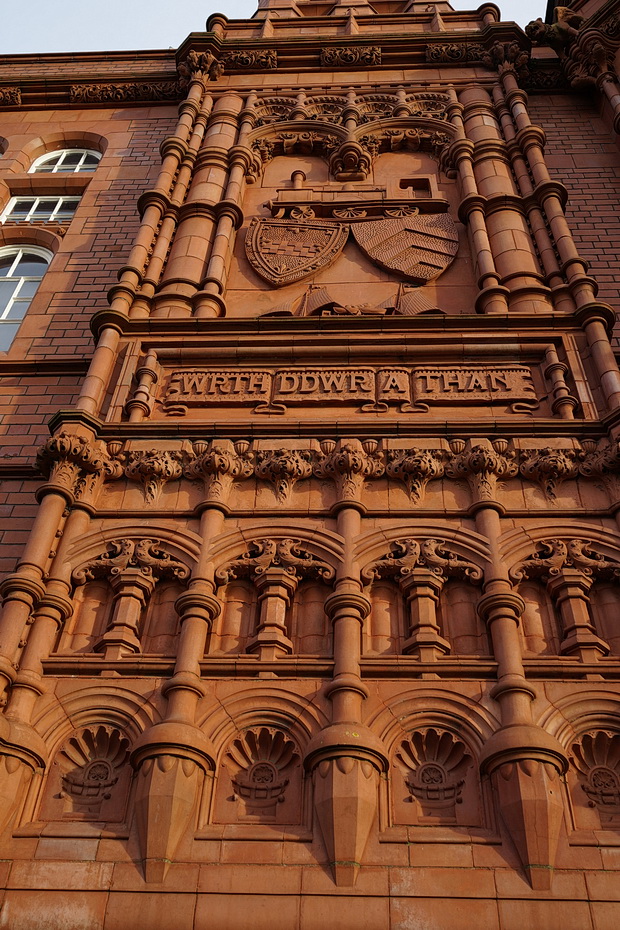
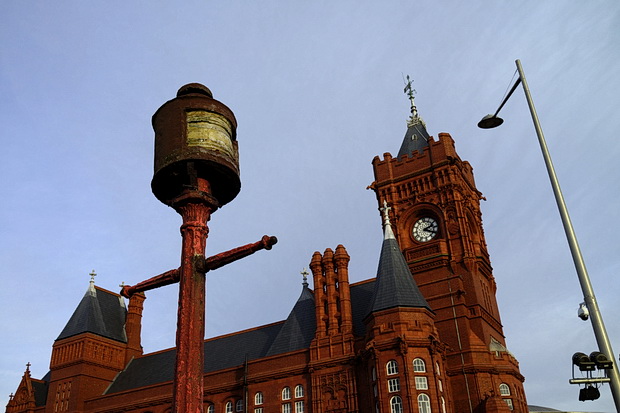
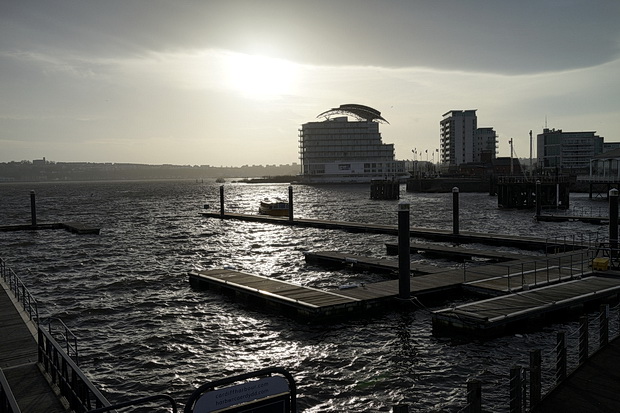
Created by the initially-controversial Cardiff Barrage, Cardiff Bay is now widely regarded as one of the most successful regeneration projects in the UK.
Supplied by two rivers (Taff and Ely), the bay forms a 500-acre (2.0 km2) freshwater lake around the former dockland area south of the city centre.
The Bay was formerly tidal, with access to the sea limited to a couple of hours each side of high water but now provides 24-hour access through three locks. [—]
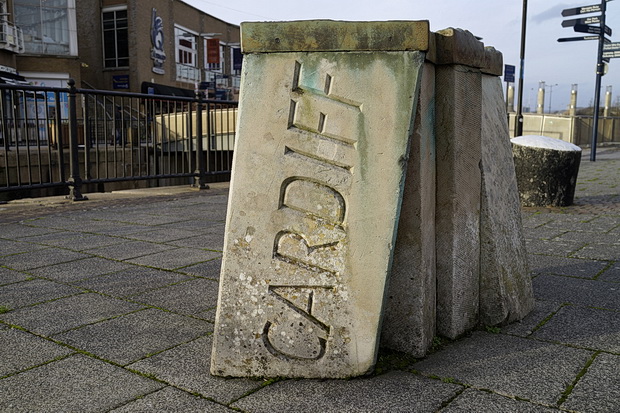
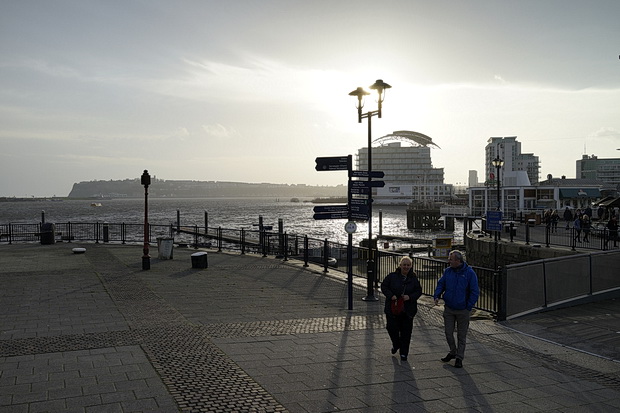
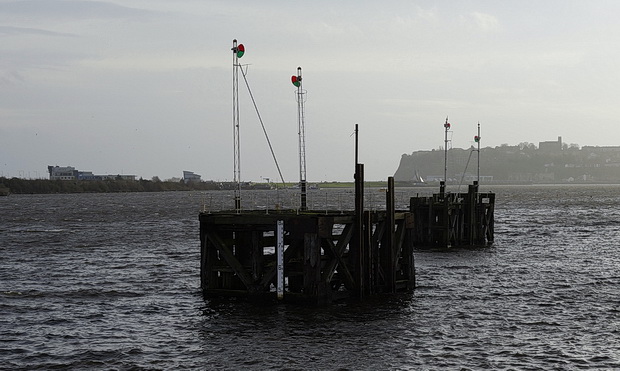
These unusual semaphore signals stuck in the middle of Cardiff Bay aren’t a relic from a flooded railway, but were used to control shipping coming into the busy dock system.
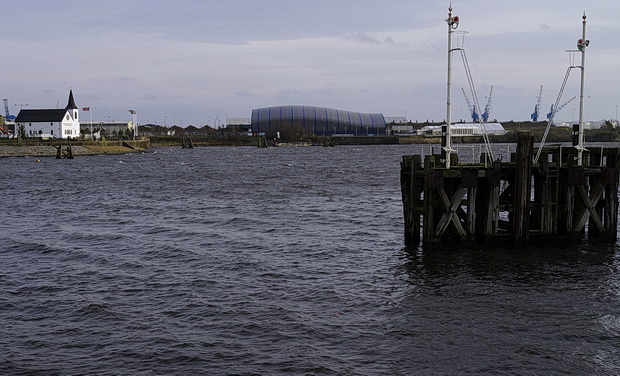
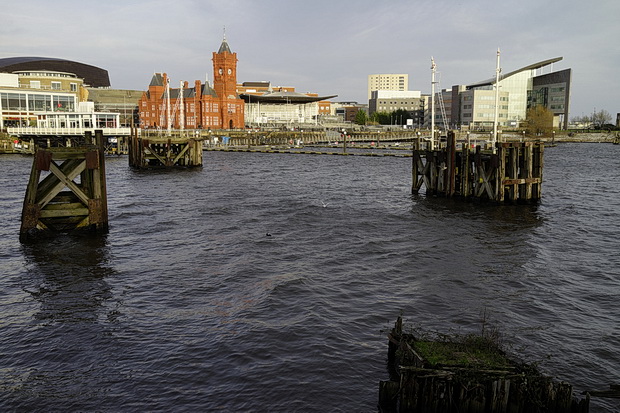
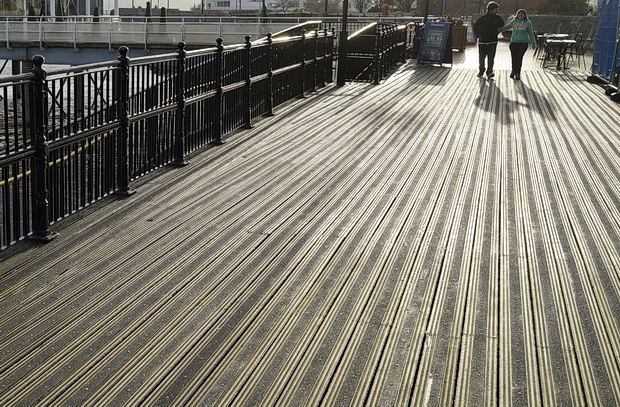
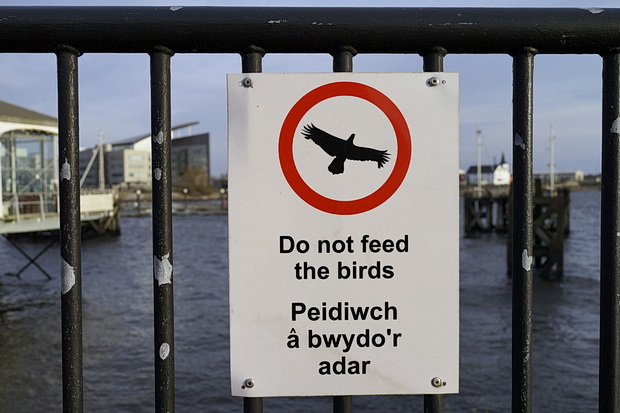
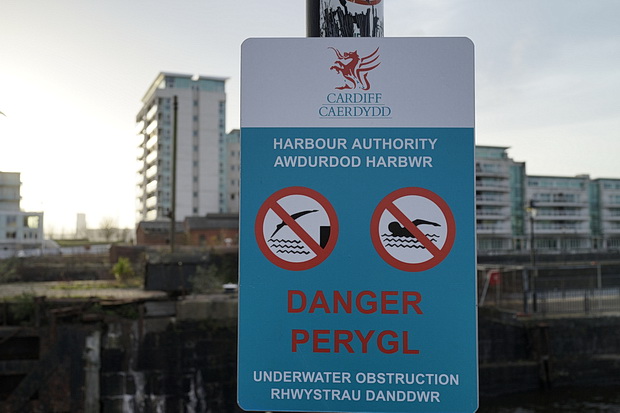
PERYGL! I’ve always liked that word.
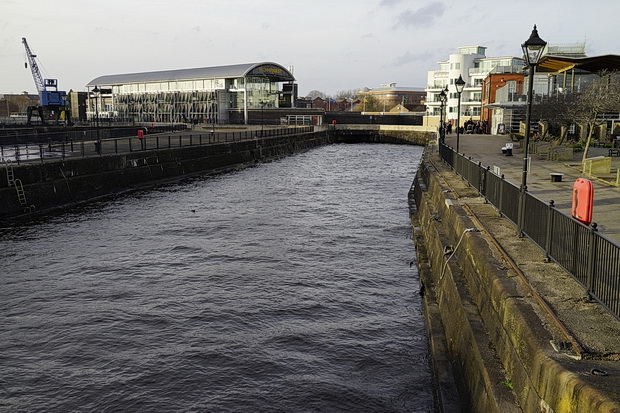
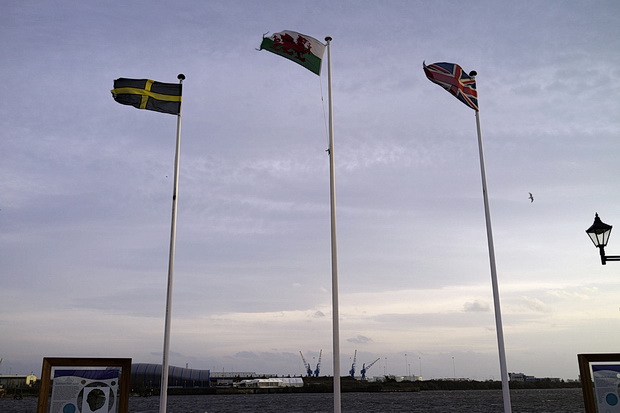
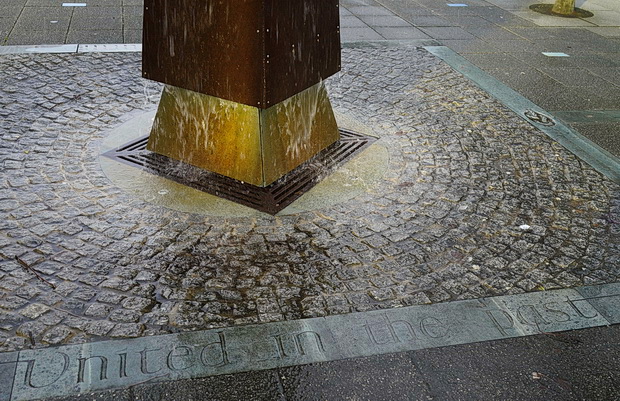
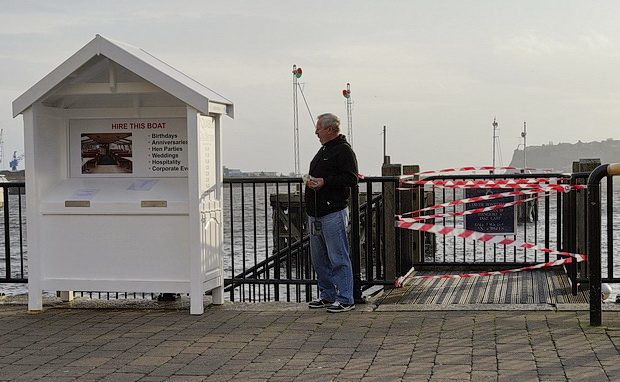
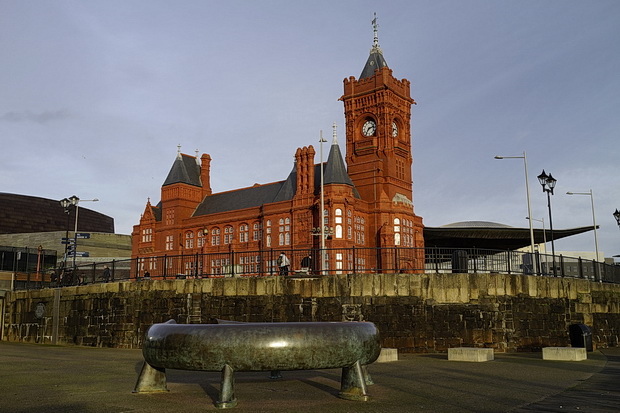
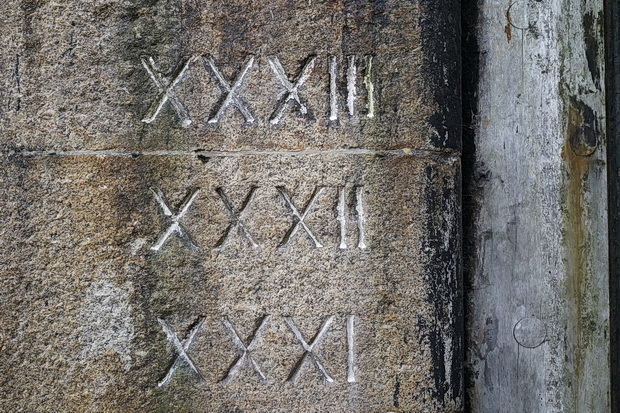
Dock detail.
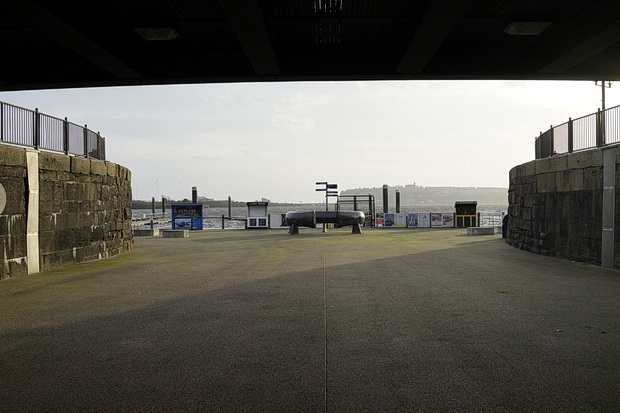
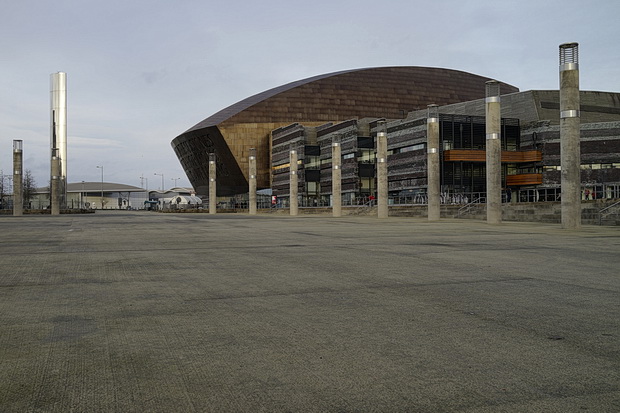
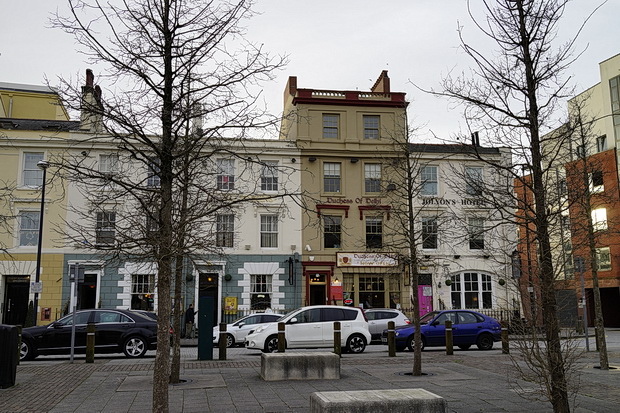
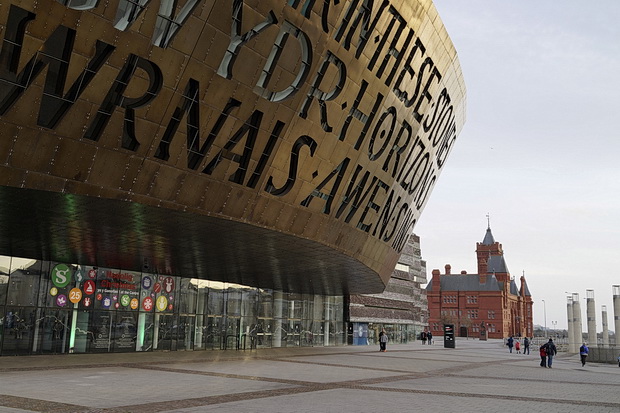
Bronze covered exterior to the Millennium Centre.
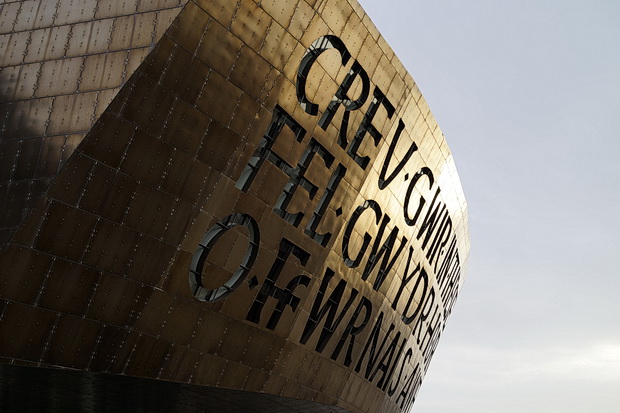
“In These Stones Horizons Sing.”
More about Cardiff Bay:
» History of Cardiff Bay/Cardiff Docks/Tiger Bay
» Photos of the Millennium Centre, Pierhead and Senedd building, 2014
» Cardiff Bay – photos around the old Tiger Bay and Cardiff Docks
» Cardiff Bay history
» Cardiff Bay 2004
» Norwegian Ch.
» Cardiff Barrage
» Millennium Centre
» Senedd/Assembly
» Cardiff Bay feature, 2009
» More Cardiff Bay photos

